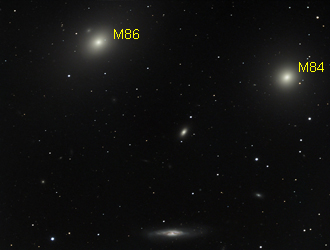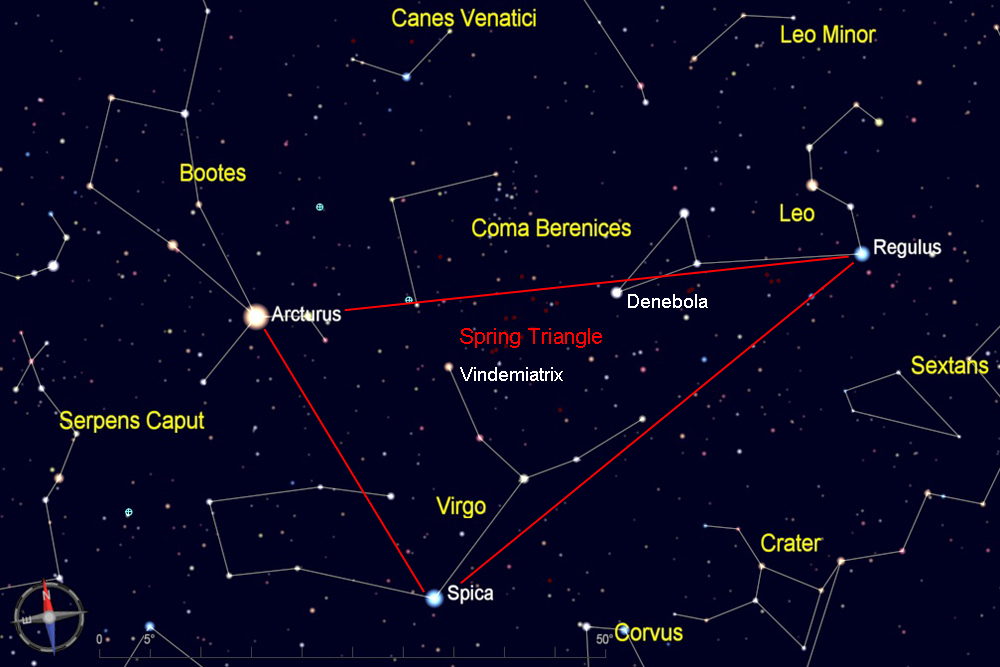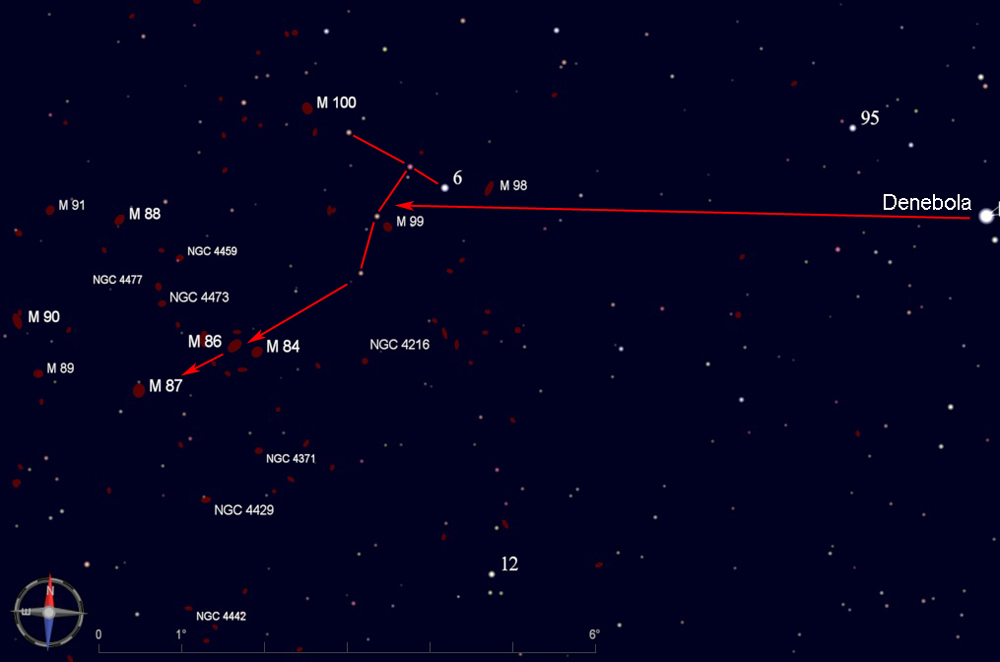These are six of the many galaxies of the Coma-Virgo galaxy cluster, which is about 50 to 60 million light years away. Identifying specific galaxies in this cluster can be confusing because there are so many within the reach of typical amateur telescopes. Using the chart below carefully will help you determine which galaxy is which. M84, M86, and M87 are elliptical galaxies, and M98, M99, and M100 are spirals.
|
. |
| Evening visibility: |
March-July |
| Best viewed with: |
telescope |
| |
Printable chart (pdf) |
View larger image |
Directions:
Start by finding the Spring Triangle, which consists of three widely-separated first magnitude stars--Arcturus, Spica, and Regulus. The Spring Triangle is high in the southeast sky in early spring, and in the southwest sky by mid-Summer. (To get oriented, you can use the handle of the Big Dipper and "follow the arc to Arcturus").
For this star hop, look in the middle of the Spring Triangle for Denebola, the star representing the back end of Leo, the lion, and Vindemiatrix, a magnitude 2.8 star in Virgo. The galaxies of the Virgo cluster are found in the area between these two stars. |
. |
| From Denebola, look 7 degrees east with a finderscope or binoculars to find a T-shaped asterism of five stars that includes 6 Virginis. As shown in the chart below, M98, M99, and M100 are each within 1/2 degree of one of the stars of the T shape, and this is a great help in finding them. Then move 2 degrees to southeast from the bottom of the T, and you will arrive at M84 and M86, which are just 1/4 degree apart. Move another degree to the southeast to find M87. With medium to large telescopes, many other galaxies can be spotted in this region of the sky. |
. |
| Star charts created with Cartes du Ciel |
| |
| |


